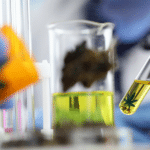The endocannabinoid system is fundamental to addiction, but not in obvious ways. All sorts of cannabinoids appear to have anti-addictive properties: CBD, THCV, Rimonabant, THC.
But Rimonabant acts by blocking the CB1 receptor, THC activates it, and CBD primarily functions in other ways. (This paradox is similar to other conditions, like Parkinson’s and obesity.) A review published by Australian researchers sheds light on various facets of addiction, as well as some of the neurological mechanisms by which CBD can limit addictive behaviors. CBD modulates serotonin directly and the endogenous cannabinoid and opioid systems indirectly. This appears to have a significant impact on how drug users recall their experience, diminishing the intensity of cravings and limiting the actual neurological effects of chronic addiction. The researchers review the role of cannabinoids in addiction, then discuss specific studies on various drugs. CBD shows promise in reducing alcohol and tobacco use, while THC appears to more effectively reduce the consumption of opioids. Individuals have reported that THC helps to get off of cocaine, but cannabinoids are less effective in animal models. All animal models of addiction are somewhat suspect, since community plays a huge role in the severity and consequences of addiction. The scientists even discuss the use of CBD to “treat” cannabis addiction, but these studies — a relic of decades of prohibition — rarely involve users who are trying to quit. (Several studies have looked at treating cannabis addiction with CBD, cannabis extracts, and even 240 mg of isolate THC.)
Read study: The Endocannabinoid System and Cannabidiol’s Promise for the Treatment of Substance Use Disorder
Adrian Devitt-Lee is a research scientist and longtime Project CBD contributor. © Copyright, Project CBD. May not be reprinted without permission.







